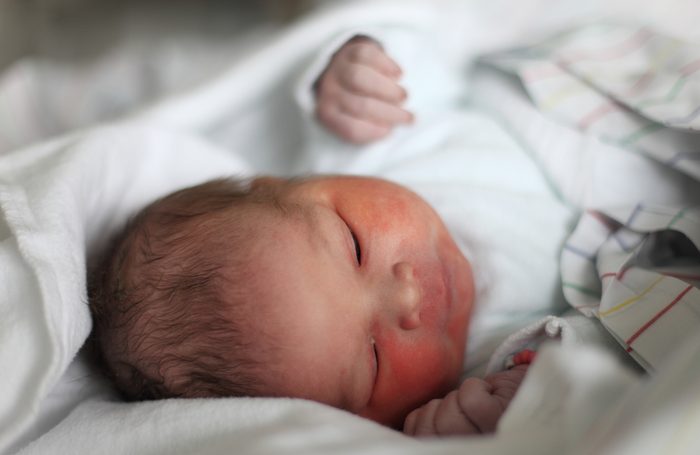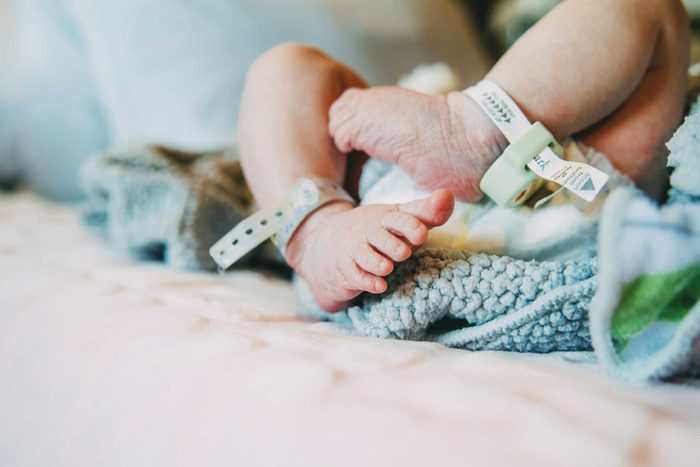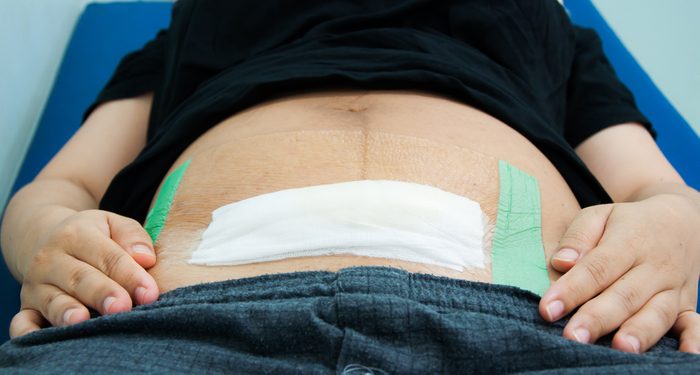
Myth: If you have a C-section, you won’t be able to enjoy skin-to-skin contact with your baby
While certain parts of your body may be more sensitive to the touch following a C-section, there’s no reason that the procedure should get in the way of skin-to-skin contact between you and your baby. It may just take some time to find a position that is comfortable for both of you. “The area where the scar is might be a little tender, but there is plenty of other skin available for the baby to make contact,” says Jonathan Schaffir, MD, ob-gyn at The Ohio State University Wexner Medical Center in Columbus. This daily habit can help you quickly recover from a C-section.

Myth: It’s too difficult to breastfeed babies delivered via C-section
Whether to breastfeed or bottle feed your baby is a highly personal decision. But if you want to breastfeed, the method of delivery won’t have a major effect on your ability to do so. Breastfeeding won’t be impossible, but it will require a little patience. It’s true that it does take a little longer for mothers who deliver via C-section to initiate breastfeeding than those who deliver vaginally. But the good news is that rates of breastfeeding are about the same no matter how you give birth between three and 24 months after delivery, according to the American Congress of Obstetricians and Gynecologists (ACOG). You may still be in pain right after a C-section, though, so try different ways of holding your baby. Dr. Schaffir suggests positioning your baby in a “football hold” next to your breast instead of a “cradle hold” on top of your stomach. If you’re still struggling to breastfeed after a C-section, meet with a lactation consultant who can offer some tips to make the process a little easier.

Myth: If you’ve already had a C-section, you won’t be able to have a vaginal birth
Having a C-section won’t prevent you from having attempting a vaginal birth after C-section, also known as VBAC. If you do wish to deliver vaginally after a C-section, you will undergo what is called a trial or labor after cesarean, or TOLAC. This trial will determine whether it’s safe to move forward with the VBAC. Fortunately, the outcomes are positive for most women. According to ACOG, about 60 percent to 80 percent of women who undergo TOLAC deliver via vaginal birth successfully. Overall, a previous C-section will have little impact on future vaginal delivery. These are health secrets your vagina wishes it could tell you.

Myth: An elective C-section is less hassle than a vaginal birth
There are a number of reasons why women undergo C-section instead of vaginal delivery, especially in the event of high-risk deliveries. March of Dimes points to deliveries with multiple babies, complications during labor and birth, and infection among reasons why a C-section would be preferable to vaginal delivery. These are all valid reasons for having a C-section, but medical experts generally want women to have a vaginal birth whenever possible. That’s why elective C-sections should be approached with caution. Sure, it’s nice to schedule exactly when you’ll deliver, but remember that a C-section is still a major surgery with that comes with risks, like any invasive procedure. Even though C-section is a generally safe, “with any abdominal surgery, there is risk of excessive bleeding, infection, or injury to the structures around the site, like the bladder and intestines,” Dr. Schaffir notes.

Myth: The recovery period for C-section and vaginal delivery is more or less the same
You’ll be putting your feet up for a while after giving birth no matter how you go about it, but expect a little extra rest and relaxation following a C-section. Women who deliver via C-section can usually go home between three to five days after the procedure, with a recovery period of up to four weeks. Women who undergo vaginal birth, on the other hand, usually leave the hospital after one or two days and need about one to two weeks to recover. You will also need to refrain from strenuous exercise, lifting heavy objects, and having sex for a while. The recovery period is a great time to ask for help from friends and family. You’ve just been through a big ordeal, so don’t feel bad about asking for support. These are the signs that your hospital will probably give you a C-section.

Myth: There’s a limit to the number of C-sections you can have
There’s no definitive number of C-sections that are safe to have. You may you undergo multiple C-sections over your lifetime, or you could end up having only one — it depends on each individual pregnancy. However, medical risks do go up with each procedure. The Mayo Clinic points to uterine scarring, bladder and bowel injuries, bleeding, and complications with the placenta as some of the risks that come with repeat C-sections.

Myth: You won’t feel anything during a C-section
With anesthesia, pain isn’t a normal sensation to experience during a C-section, but you may still feel some tugging or pressure. There is a baby coming out of you, after all. Nausea and vomiting either before or after a C-section are also fairly normal. A review from the Cochrane Pregnancy and Childbirth Group explains that these symptoms may be a result of a woman’s low blood pressure, or medications administered during the C-section. Learn the surprising things no one tells you about giving birth.